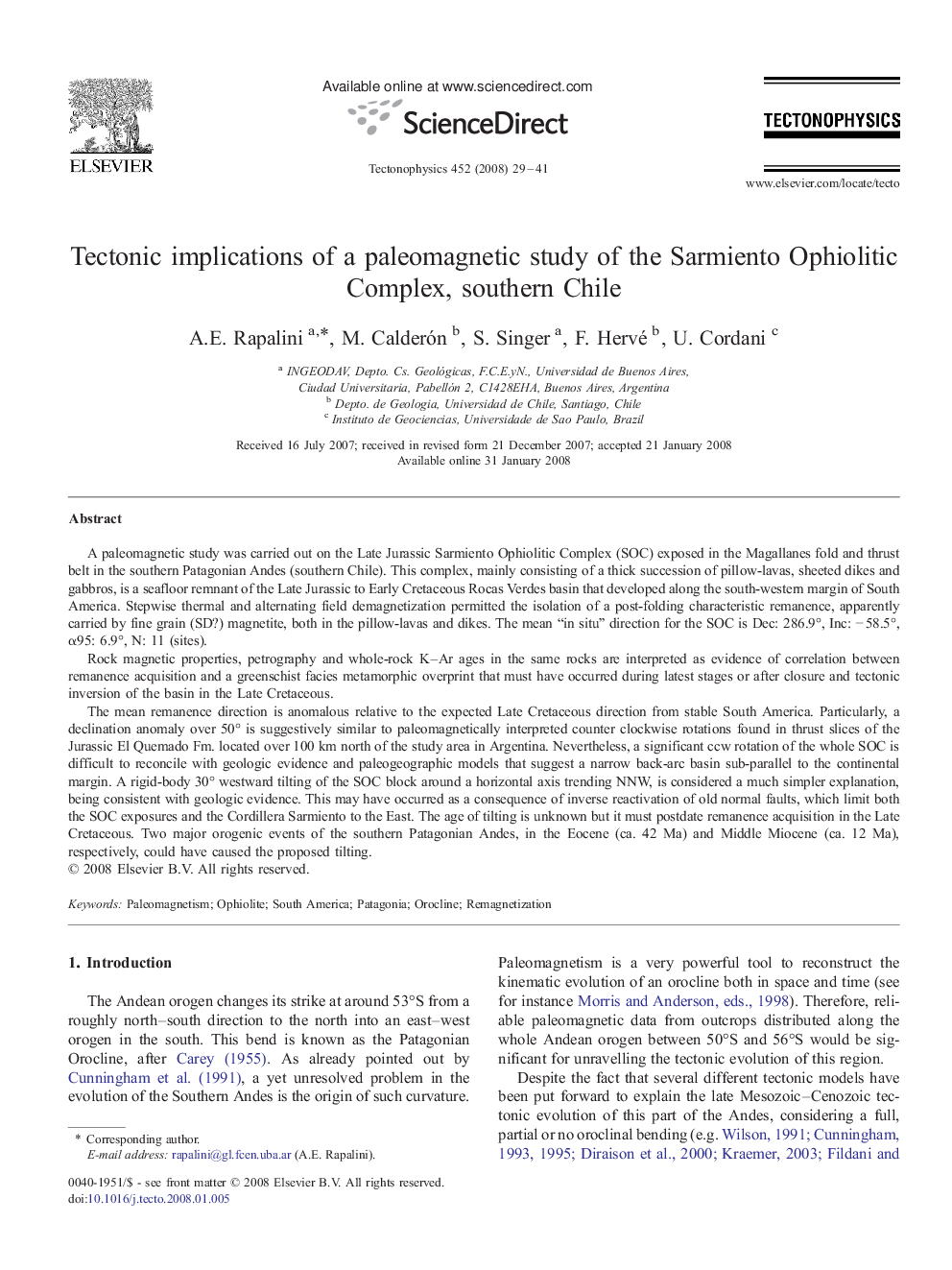| Article ID | Journal | Published Year | Pages | File Type |
|---|---|---|---|---|
| 4694552 | Tectonophysics | 2008 | 13 Pages |
Abstract
The mean remanence direction is anomalous relative to the expected Late Cretaceous direction from stable South America. Particularly, a declination anomaly over 50° is suggestively similar to paleomagnetically interpreted counter clockwise rotations found in thrust slices of the Jurassic El Quemado Fm. located over 100 km north of the study area in Argentina. Nevertheless, a significant ccw rotation of the whole SOC is difficult to reconcile with geologic evidence and paleogeographic models that suggest a narrow back-arc basin sub-parallel to the continental margin. A rigid-body 30° westward tilting of the SOC block around a horizontal axis trending NNW, is considered a much simpler explanation, being consistent with geologic evidence. This may have occurred as a consequence of inverse reactivation of old normal faults, which limit both the SOC exposures and the Cordillera Sarmiento to the East. The age of tilting is unknown but it must postdate remanence acquisition in the Late Cretaceous. Two major orogenic events of the southern Patagonian Andes, in the Eocene (ca. 42 Ma) and Middle Miocene (ca. 12 Ma), respectively, could have caused the proposed tilting.
Related Topics
Physical Sciences and Engineering
Earth and Planetary Sciences
Earth-Surface Processes
Authors
A.E. Rapalini, M. Calderón, S. Singer, F. Hervé, U. Cordani,
